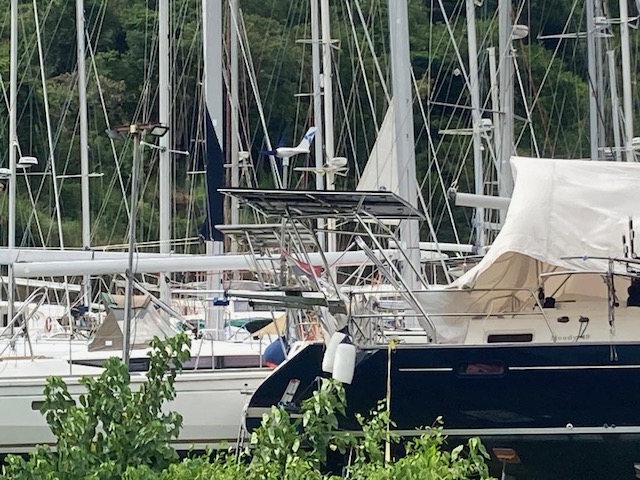
It’s been a long summer of silence here on sailingjace.com. We have been busy with work and travel and a lot of prep for our trip. Kristoffer graduated from high school and moved to Tokyo for his 9-month internship at a game development company and Anika started her last year in Middelburg. We are so proud of both of them!
In the meantime, JACE has been undergoing some very valuable refit work. As you might recall, our main goal was to convert her into sustainable solar-powered lithium ion battery power for all electric systems onboard. In addition, there were a number of improvements and maintenance items on our list that have also been largely completed.
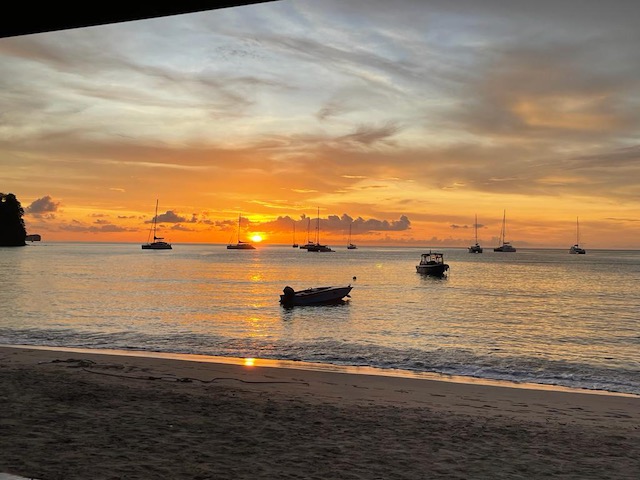
So JACE is now in tip top shape and is eagerly awaiting her being lifted back into the water, which should happen in the next few days. Karin arrived in Grenada from Germany today and I am scheduled to arrive on Sunday from California.
So that is the status. More news in the days to come.
For those interested in the geeky details, below a brief summary of the work done with a few pictures.
First though, I don’t want to miss this opportunity to thank Brad, who has been our “general contractor” on site. He is such a nice guy and very capable and so very reliable. We could have never done this without him, his knowledge and expertise, his connections to all the local experts, and his patience and great advice. Thank you Brad! For those in need of “boat guardianage” – as he calls it – in Grenada, we highly recommend him. Contact us if you need his number.
1) Solar and lithium ion conversion
Much of this is fairly invisible. The solar panels are the most prominent feature. We opted for four 375W panels for a total of 1.1kW nominal power output. To accommodate that many panels, we had to design a new “solar arch”, the stainless steel structure at the back of the boat. It had to be stronger, wider, and further forward than the old 2-panel arch. This picture shows the arch with the frame for the panels.
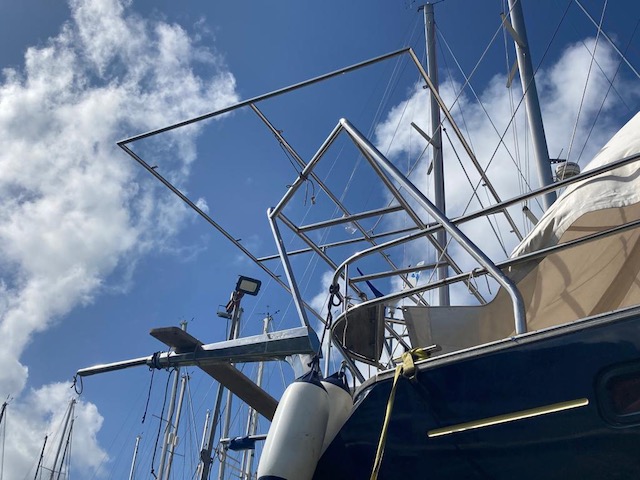
The invisible heart of the electric conversion was replacing the old lead-acid batteries with three 300 Amp-hours 12V lithium ion batteries for a total capacity of 900 AH * 12V = 10.8 kWh. In order to handle both charging and consuming from these high-input/output batteries, new charge-controllers and inverters were needed as well as a bunch of new wiring, fuses, switches, and monitoring equipment. Thankfully we were in the greatest of hands; Grenada’s leading marine electrician Aaron did a great job and navigated the many hurdles along the way, not the least of which was to find room for the much bigger equipment without sacrificing storage space. We are awaiting a system test once the boat is back in the water but all should be working great now.
2) Passerelle removal
The Passerelle is a heavy hydraulic movable gangway at the back of the boat. In Europe, where the boat was originally stationed for a decade, these are common and useful for docking in small ports “med-moor style”. Here in the Caribbean that is rare and this heavy piece of gear is therefore rarely needed and mostly in the way when trying to get to the swim platform. So we decided to remove it. That left some ugly holes in the teak deck and the hull that were professionally patched.
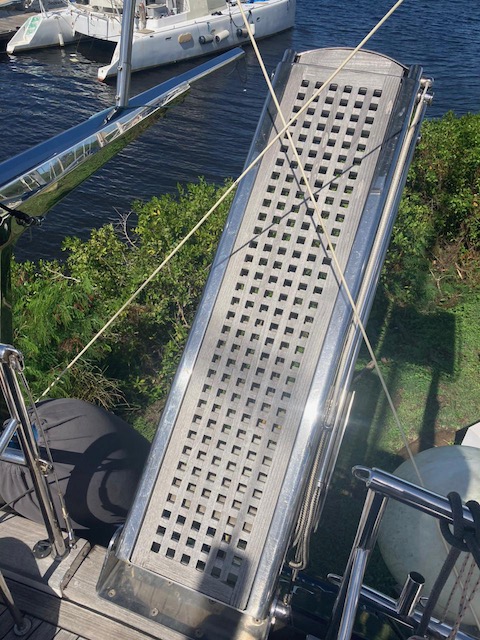
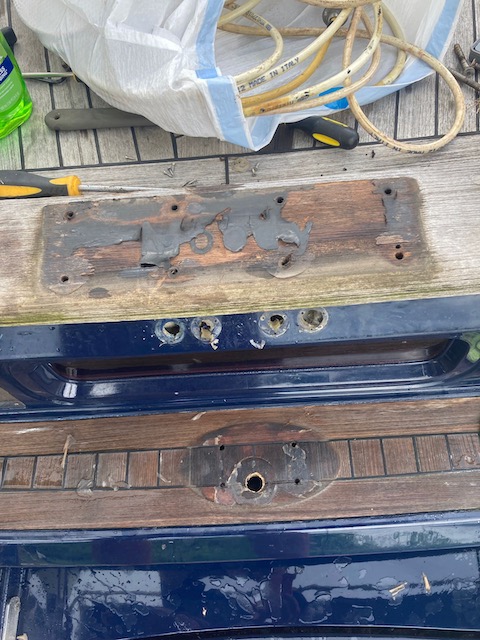
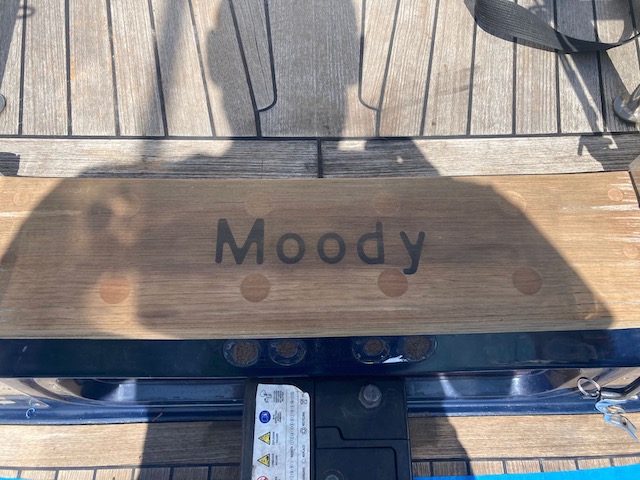
3) Repair autopilot
You might recall the autopilot was broken and Brad and I had to hand steer JACE on our trip to Grenada. We got all the parts, a new ram was sailed down from St Maarten by another sailboat. But we ran into some difficulties and needed hydraulic elbows to route the hoses differently. Those had to be sourced in the US and picked up by Brad in Miami on one of his trips through there to avoid Grenada customs trouble. So now all is set and hopefully working fine, which we will test once in the water.
4) Through hulls and seacocks
A boat of this size has a surprisingly large number of “holes” in the hull through which water is either taken in (eg engine cooling, toilet flushing) or discharged out (eg sinks). These holes are secured through a through hull (brass fitting in the glass fiber hull) and a seacock (massive brass valve that can be closed in the case of internal failure). JACE is old enough that a number of these fittings were corroded and beyond their lifespan and needed to be replaced. Not glamorous work by any stretch as those beasts are located deep down and often in hard to get to areas. But thanks to Brad’s expert knowledge and experience, those in need for retirement were replaced and others serviced. So we are all good.
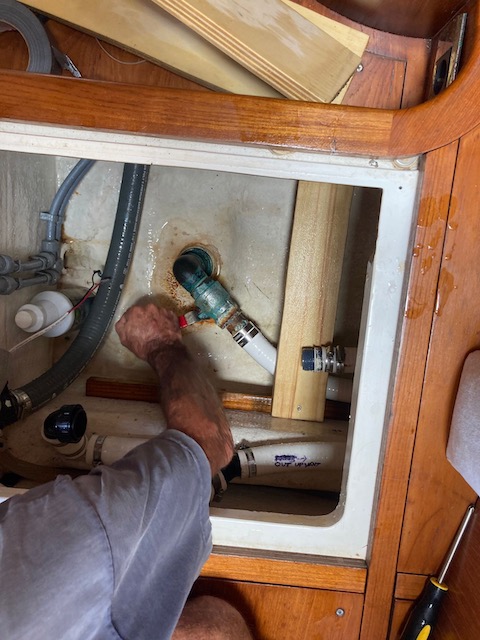
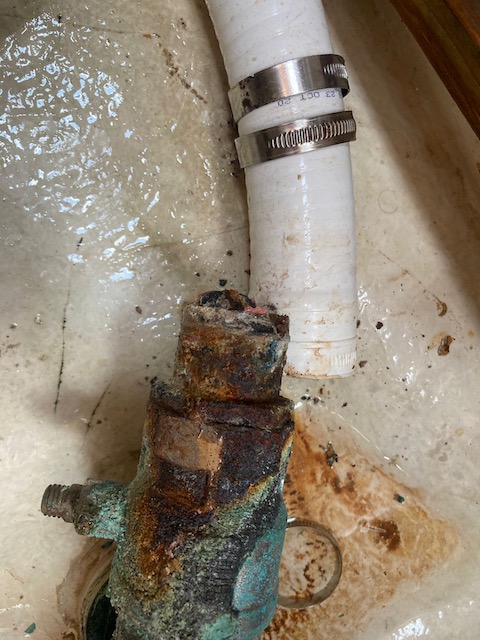
5) Keel bolts
While it looks like the keel of the boat is an integral part of the hull, it is actually a separate part that is bolted onto the hull with eight massive bolts. During the survey, our diligent surveyor had noticed some play between hull and keel and recommended those bolts to be checked. And sure enough we found three of them quite loose and had them tightened. Good thing as you do NOT want to lose that keel!
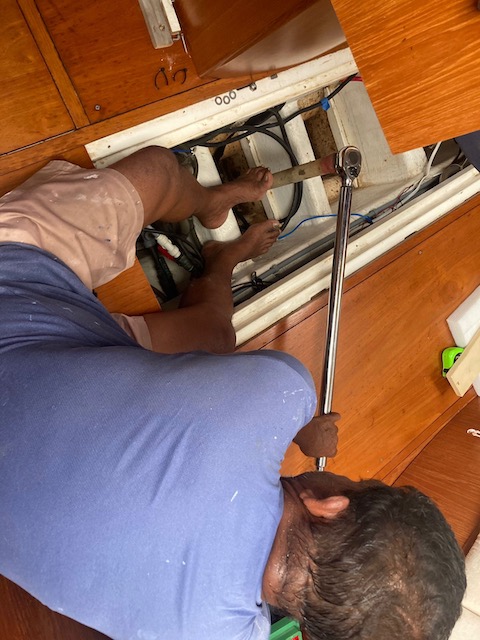
6) Other
There were a number of smaller projects like turning around a few of the deck hatches (now forward-opening) to improve ventilation below, improve the anchor bow roller, service the engine and generator and clean the diesel tanks (remember our engine trouble coming down), improve the much-loved “gin & tonic” seats at the very back of the boat, and a few other things.
That’s pretty much the list and we are very excited to see JACE in such like-new shape!